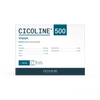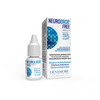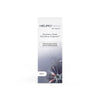Menopause: a stage to pass smoothly

Menopause represents a stage of physiological upheaval in a woman's life. To understand it best, it is first important to understand the elements that define it. Although not an illness, menopause can be difficult for some women. Indeed, it exposes you to multiple changes , some of which can appear painful on a daily basis. Solutions exist to relieve the inconveniences that may arise. What if menopause was the time to make good resolutions for your health? Here are tips for getting through this stage smoothly.
Menopause: how to define it and what does it mean?
The end of capital in ovarian follicles
Every little girl is endowed at birth with ovarian follicular capital. With each cycle, starting at puberty, an ovarian follicle evolves and develops. Physiologically, premenopause corresponds to a progressive cessation of cyclical hormonal secretion due to exhaustion of ovarian follicular capital.
Menopause , for its part, corresponds to a cessation of menstruation for more than a year and generally occurs between the ages of 45 and 55 . The period surrounding menopause results in a certain number of visible or invisible changes and signs.
The hormonal implications of this follicular depletion
Pre-menopause represents the transition phase which precedes menopause itself. All this is explained by changes in the hormonal secretion of estrogens and progesterone. It is these hormonal changes which cause a period of turbulence at the origin of the complaints and manifestations of women in whom menopause gradually sets in.
Concerning postmenopause , it is defined a posteriori by an absence of periods for more than a year due to the cessation of ovarian function .
Multiple and varied signs
It begins with an irregularity of cycles, periods paradoxically more abundant than usual, a marked premenstrual syndrome, weight gain due to water retention. Then come long cycles and much less abundant periods, so-called vasomotor manifestations (hot flashes, night sweats, etc.), variations in mood (fatigue, depression, reduced libido) and skin and mucosal changes (modification skin, vaginal dryness, urinary problems, etc.).
What are the main signs and consequences of premenopause in practice?
Hot flashes
This is a sudden sensation of rising temperature . Strictly benign, hot flashes nonetheless remain socially disabling and can clearly impact quality of life (1) .
Short-lived, they disappear as quickly as they arrived and affect the entire body or only part of it (face, cheeks, ears, palms and soles, etc.). Sometimes redness of these areas is associated. Their frequency and time of occurrence vary greatly from one woman to another.
In about half of cases, they are accompanied by sweating (which aims to restore a normal temperature). It is also possible to experience other concomitant manifestations such as feelings of anxiety, palpitations, migraine.
Vaginal atrophy and urinary disorders
Vaginal dryness that appears with menopause is linked to changes in estrogen levels. The vaginal and bladder mucous membranes are under the influence of the latter (they are called estrogen-dependent).
The manifestations of vaginal atrophy can be extremely unpleasant : burning sensations, itching, discomfort or even pain during sexual intercourse. It is also a period of weakening of the vaginal flora.
Concerning the bladder mucosa, the drop in estrogen levels leads to leaks or even recurrent infections .
Mood disorders and insomnia
Some women, during this period, express that they no longer recognize themselves in their reactions. And for good reason: irritability, mood swings , lack of enthusiasm, depression are manifestations to be linked to hormonal changes.
Furthermore, recurrent insomnia leads to fatigue, which increases the previous symptoms to form a vicious circle.
Libido can also be reduced or even disappear more or less suddenly.
Bone demineralization
Estrogens play a stimulating role in bone production and, moreover, have a slowing action on natural bone destruction. This explains why once menopause sets in, the risk of osteoporosis and therefore fracture and/or vertebral compression is higher.
Bone loss is significant during the first 4 to 5 years. Of course, there are other risk factors for osteoporosis that we must also try to detect.
Cardiovascular risks
The change in hormonal status, and in particular the drop in estrogen levels linked to menopause, has an impact on lipid metabolism .
Hypercholesterolemia, with increased levels of LDL cholesterol and plasma triglycerides, constitutes an additional risk of cardiovascular pathologies .
What effective and natural remedies are available for the symptoms surrounding menopause?
Change your lifestyle habits
In general, maintaining gentle and regular physical activity , as well as changing certain eating habits, are all measures from which you can obtain certain benefits.
Promoting suitable food helps minimize the inconveniences linked to menopause (2) . Home cooking will be much preferable to industrial dishes, filled with sugar, salt and bad fats (3) .
Recommendations have been established for the needs of postmenopausal women (4) . Strengthen intake of certain vitamins, essential minerals and proteins in sufficient quantities.
Food supplements can supplement the nutritional intake during this period. Evening primrose oil in capsules, magnesium and vitamin B6 are a useful trio to alleviate certain symptoms.
For other nutrients, you will have to be more restrictive. Therefore, it will be in your best interest to limit sodium intake by moderating your salt consumption. Alcohol and coffee are not good allies because of their exciting effect. The same goes for chili peppers and spicy dishes which can increase hot flashes.
Use herbal medicine
There are phyto-hormones , that is to say plants which imitate the action of certain hormones. Estrogen-like plants, that is to say analogous to estrogens, act on the same receptors as these. This is the case for medicinal sage or black cohosh (5) . In food too, there are foods rich in phytoestrogens (soy, chickpeas, flax seeds, etc.). These effects can relieve signs such as hot flashes, mood swings or even difficulty falling asleep. Others have a hormonal regulation effect (buds of
raspberry, chasteberry, cranberry buds, etc.). Pink stonecrop can have a positive effect on feelings of weariness and libido.
The use of plants requires good control and must take into account the history of the menopausal woman because there are contraindications in certain cases. The advice of a professional qualified in herbal medicine is required.
Initiate hormone replacement therapy if necessary
Hormone replacement therapy (HRT) can be prescribed for well-established indications that your treating doctor or gynecologist will define. Indeed, like any medicinal prescription, it contains certain contraindications which must be detected beforehand.
In addition, it is not devoid of undesirable effects of which the treated woman must be informed of the possible occurrence. Depending on this, an adaptation of the dosages may be necessary, which requires regular medical monitoring.
What specific solutions according to the symptoms?
Hot Flashes: Try Proven Remedies
You should know from the outset that certain factors are known to promote the occurrence of hot flashes , such as smoking, sedentary lifestyle, stress. They are sometimes a good opportunity to change your lifestyle. Hot flashes generally respond well to herbal medicine and dietary adjustments .
Vaginal atrophy: moisturize and soothe for greater comfort
Ectoine and hyaluronic acid are 2 components which can compensate for the lack of humidification of the vaginal mucosa linked to menopause and soothe unpleasant sensations.
Locally acting estrogens may also be offered. Thus, estriol is applied to the vulvovaginal mucosa in the form of cream or vaginal ova.
Bone demineralization: stock up on nutrients for your bone capital
To combat bone demineralization, it is important to reduce tissue acidity . In other words, we must aim for a diet low in acid-forming foods.
Faced with the threat to bone density, we will have to focus on foods rich in vitamins D3 and K, as well as minerals such as calcium, magnesium, zinc and phosphorus. Furthermore, you must ensure that you have a sufficient protein intake (at least 55 to 60 g/day depending on weight).
Finally, it is necessary to optimize the intestinal flora which is the site of the synthesis of vitamin K, important in maintaining bone health.
Dairy products, contrary to popular belief, are not necessarily the best allies in the fight against bone demineralization. This is why we must also rely on other sources of calcium : fruits and vegetables, mineralized waters, whole grains, oilseeds (almonds for example) or even fatty fish.
Some women experience menopause without any inconvenience. Others, on the contrary, experience all the uncomfortable symptoms. For this, effective remedies exist in association with some changes in lifestyle habits, particularly dietary ones. The support of herbal medicine can also prove valuable. The subject of menopause still remains taboo but we must dare to talk about it because, given the variability of symptoms, personalized and adapted care is the key word.
Bibliographic references:
2. Noll PRES, Campos C a. S, Leone C, Zangirolami-Raimundo J, Noll M, Baracat EC, et al. Dietary intake and menopausal symptoms in postmenopausal women: a systematic review. Climacteric J Int Menopause Soc. Apr 2021;24(2):128‑38.
3. Noll PRES, Noll M, Zangirolami-Raimundo J, Baracat EC, Louzada ML da C, Soares Júnior JM, et al. Life habits of postmenopausal women: Association of menopause symptom intensity and food consumption by degree of food processing. Maturitas. Feb 2022;156:1‑11.
4. Nutritional references for vitamins and minerals [Internet]. ANSES - National Agency for Food, Environmental and Occupational Health Safety. 2021 [cited September 9, 2022]. Available at: https://www.anses.fr/fr/content/les-r%C3%A9f%C3%A9rences-nutritionnelles-en-vitamines-et-min%C3%A9raux
5. Geller SE, Studee L. Botanical and dietary supplements for menopausal symptoms: what works, what does not. J Womens Health 2002. Sep 2005;14(7):634‑49.
Share



